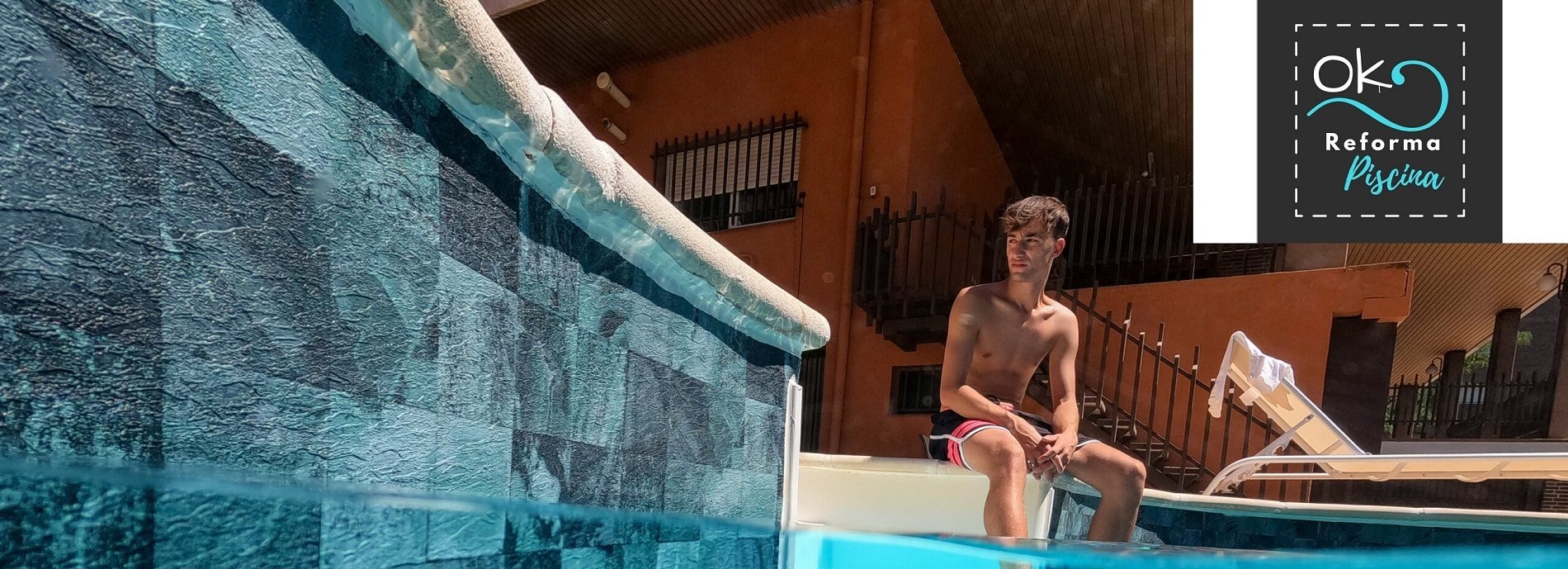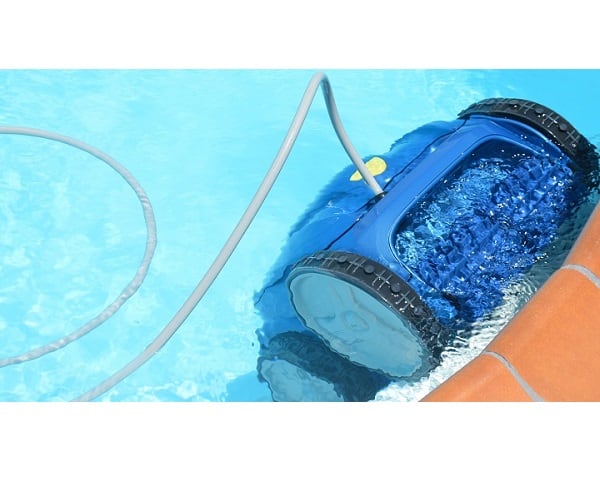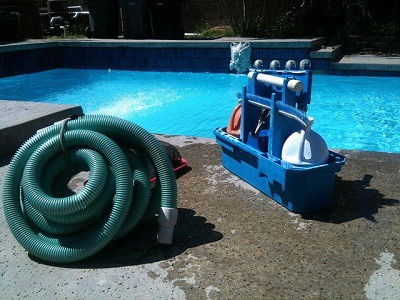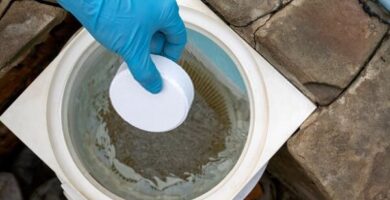
Table of contents of the page
En Ok Pool Reform and within the Pool Maintenance Guide We will talk to you about: How to remove calima (Saharan) dust from the bottom of the pool.
What is the “HALIMA” dust in your pool water?

What is Saharan pool dust?
The dust that accumulates in the water of your pool is called "CALIME". CALIMA is a natural atmospheric phenomenon that occurs when particles of dust and sand rise from the ground and are carried by winds. These particles accumulate in clouds and then fall to the ground, resulting in the formation of "dust."
CALIMA can be very annoying, especially if you have allergies or asthma. While not harmful to health, the dust can be difficult to breathe and can irritate the eyes, nose, and throat. If you are in an area affected by CALIMA, it is important to stay hydrated and cover your mouth and nose with a bandana or mask to avoid inhaling the dust.
If your pool is located in an area affected by CALIMA, you may notice a decrease in water quality. Dust can clog valves and filters, making the water look cloudy and opaque. If this happens, it is important to clean the pool filters and valves to ensure the water is clean and clear.
CALIMA can also cause electrical problems if it accumulates in electrical conductors. If your home is located in an area affected by CALIMA, it is important to disconnect all electrical appliances and cover them to avoid damage.
If you are in an area affected by CALIMA, it is important to follow the instructions of local authorities to stay safe. If your pool is affected by dust, it is important to clean it immediately to avoid permanent damage.
How to remove dust from the bottom of the pool
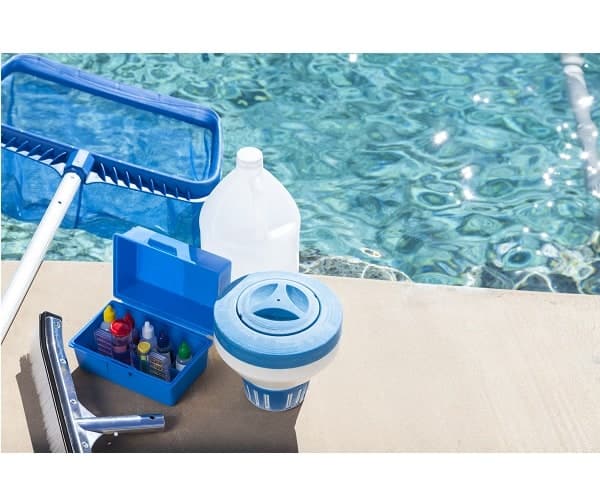
Useful guide to know how to clean the pool
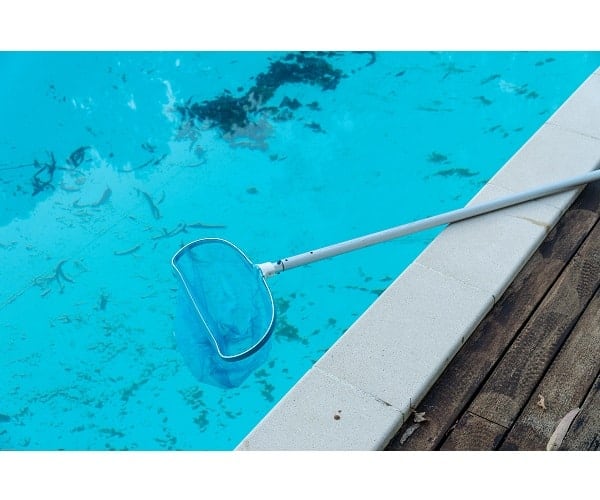
Guide to maintaining a pool with water in perfect condition
If your pool water looks cloudy or cloudy, it is likely due to the presence of dust or dirt. This can be especially common in areas where there is a lot of wind, such as during a "haze" event.
While it is important to keep your pool clean and free of debris, you may not always be able to avoid this type of problem. Fortunately, there are some simple steps you can take to remove dust from your pool water.
1st: Remove debris from the surface of the pool
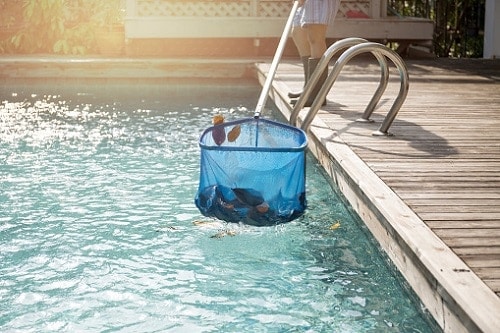
- The first option to use is to clean the surface of the pool with a leaf collector.
- Secondly, you can use the pool skimmer. This device helps remove floating debris from the surface of the water. Be sure to clean the skimmer basket regularly so it can continue to function effectively.
2nd: Vacuum the bottom of the pool and collect any debris that may be causing the dust.
- First of all, mention that with a lot of dust deposited, when initially using the automatic pool cleaner it would become clogged very quickly, therefore, in this first phase it is not recommended.
- So whether or not you have an automatic robot, you must first remove the dust deposited with the manual bottom cleaner and with the filter empty, at least for 5 minutes.
- Once we have some of the most persistent dirt out, we can use the filtration mode to purify with the filter and thus save water.
Pool owners know that it is important to vacuum the bottom of the pool regularly.
This not only helps keep the pool clean, but also helps prevent the buildup of algae and bacteria. Vacuuming also helps remove debris that may be causing dust, such as leaves or twigs. Additionally, vacuuming the bottom of the pool helps prevent the formation of calcium deposits, which can damage the pool's finish. Whether you have an above-ground or in-ground pool, vacuuming is an essential part of maintenance. With this simple step, you can help keep your pool clean and safe for swimming.
Step 3: If you have a sand filter, backwash the pool
- As anyone who has dealt with a sand filter knows, backwashing is an essential part of maintenance. Without backwashing, the filter quickly becomes clogged with dirt and debris, reducing its effectiveness in cleaning the pool.
- Backwashing also helps remove mineral buildup in the sand, which can eventually cause a blockage.
- It is worth mentioning that the process is simple: Turn off the pump, set the valve to “backwash” and run the water until it is clean. Then turn the pump back on and enjoy your clean pool.
4º Regulate the pH value of the pool water
Ideal pool water pH levels are between: 7,2-7,4
Once you've removed the dust from your pool water, be sure to test the pH levels. You can do this with a simple test kit that you can purchase at your local pool supply store. If the pH levels are too low, it could mean that your pool water is too acidic. This can be dangerous for swimmers and can also damage pool equipment.
If the pH levels are too high, it could mean that your pool water is too basic. This can also be dangerous for swimmers and can damage pool equipment. Be sure to adjust pH levels accordingly so they are in the proper range for swimming.
5th: Add clarifier to the pool and run it for 24 hours

Does the pool clarifier act as a pool anti-algae?
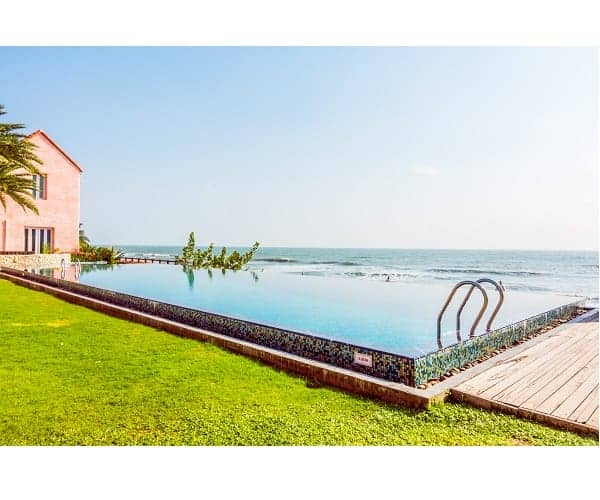
Pool clarifier: pool turbidity remover. Better than flocculant
It's that time of year when the weather starts to get warmer and everyone is ready to take a dip in the pool. But before you can enjoy fresh water, there are a few things that need to be done first. One of them is to add clarifier to the pool. The clarifier helps remove small particles from the water, making it brighter and ensuring the filter can do its job more effectively. It is important to follow the instructions on the package, but in general, you must add clarifier to the pool and run the pump for 24 hours. This will help keep the pool clean and clear all season long.
6th: Apply chlorine to the pool and let it run for 24 hours
Applying chlorine to the pool is an essential part of keeping it clean and safe for swimming. Chlorine helps eliminate bacteria and other contaminants that can cause illness. It is important to carefully follow the instructions on the chlorine container, as excess chlorine can be harmful. Once the chlorine has been applied, it is important to let the pool filter run for 24 hours to ensure that the chlorine has had a chance to distribute evenly throughout the water. After 24 hours, the pool should be safe to swim in. Following these simple steps will help keep your pool clean and your family healthy.
7th: If you have a lot of debris in your pool, you may consider using a pool cover.
This will help keep the water clean and free of dirt and debris. Be sure to put the cover on before turning on the pool pump so it has a chance to catch all the debris.
Remove white dust pool bottom
A sparkling clean pool is the highlight of any hot summer day. By following these simple tips, you can ensure your pool is ready for any activity. Whether you're hosting a party or just enjoying a leisurely afternoon swim, a clean pool is essential. So don't wait - start making your plans for a fun and safe summer today!
